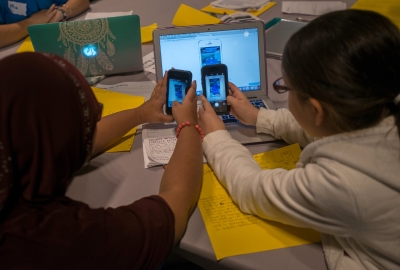
CS4All: Examining Equity in Computer Science Access and Participation in NYC Schools
By Cheri Fancsali (October 2022)
With Janice Lee, Alexandra Adair, Kathryn Hill, Edgar Rivera-Cash, and Symantha Clough
New York City is one of several large school districts around the country that are working to promote “computer science for all” students. Launched in 2015, NYC’s CS4All initiative aims to provide every NYC student with meaningful CS learning experiences that help them develop computational thinking, problem-solving, creativity, and critical thinking skills. As part of the Research Alliance’s ongoing evaluation of CS4All, this report examines progress toward the initiative’s goals, including the extent to which schools are reaching all of their students with CS, as well as the extent to which participation is equitable for girls and Black and Latinx students—who have been starkly underrepresented in CS education and careers. Among the report’s key findings:
- Overall, from the 2018-2019 school year to the 2020-2021 school year, the district made important progress toward CS4All’s goals. By 2021, most schools in NYC (91%) were offering CS (up from 76% in 2019); 17 percent of schools were achieving the initiative’s participation and equity goals (an increase of 5 percentage points).
- Most of the improvement occurred between 2018-2019 and 2019-2020. Less improvement was seen between 2019-2020 and 2020-2021, which is likely related to the onset of the COVID-19 pandemic and the move to remote instruction.
- Despite positive trends, even in 2020-2021, fully half of schools were reaching only a small portion of their student enrollment with CS (i.e., less than 10 percent).
- Schools that made greater improvements were more likely to have multiple teachers participate in CS4All professional development (PD) and to have an administrator or teacher participate in the CS4All leadership PD, suggesting these experiences may have helped facilitate implementation.
- Schools that made greater improvement also served lower percentages of Black and Latinx students on average, pointing to persistent inequities in CS access and participation not only within schools, but also across schools.
- In general, elementary schools were more successful in reaching the initiative’s goals than middle or high schools. The relative success of elementary schools is probably related to the fact that, at this level, CS is often integrated into classes that all students take. The CS content at the elementary level may also be easier to grasp for teachers who are new to CS, compared with the more advanced content typically offered in middle and high school courses.
The report draws on these findings to outline a number of recommendations, which the NYCDOE has acted on in their programming and support efforts as well as strategic planning for the 2022-2023 school year. Next steps for the evaluation include work aimed at understanding factors that promote or hinder schools' progress toward CS4All's goals, as well as possible solutions. We will also look closely at the implementation of culturally responsive-sustaining educational practices in CS. Finally, our evaluation will examine short and longer-term outcomes for students taking CS, such as CS-related attitudes, perceptions, and achievements; continued interest and engagement in CS course-taking; and post-secondary enrollment and attainment.
